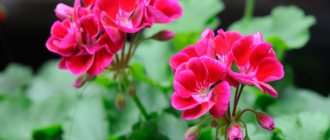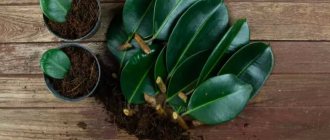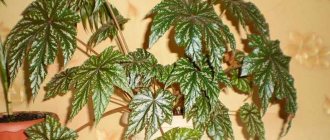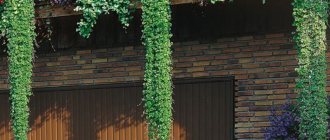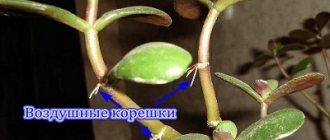Begonias look great both at home on the window and in the garden. Royal rex begonias, bush begonias and other species are often planted at home.
In nature, begonias grow in humid subtropics and tropics. There are about 1,400 species of them, they belong to the genus of annual and perennial herbs, shrubs from the family Begoniaceae, deciduous, and evergreen. This plant was discovered by Charles Plumier, but it was named after the governor of the former colony of Haiti, Michel Begon.
The classification of begonias is as follows - ever-flowering, ampelous, thick-stemmed, tuberous, royal, rhizomatous, bush and so on.
How to properly care for begonia at home
Begonia is one of the most beautiful plants that decorates our squares, parks, gardens and apartments. The flower belongs to the huge family Begoniaceae. Today, this genus has about 900 full-fledged and 2000 hybrid species. Begonia was first described back in 1690 by Michel Begon, and it began to be used for decorative purposes only 200 years ago.
From the history
The history of begonia began in the Antilles, where Michel Begon first described it. Subsequently, this flower was named after him. A few decades later, an ever-flowering begonia native to Brazil was described, and even later, a royal begonia from the Hindustan Peninsula and a tuberous subspecies from South America. It is from them that all modern varieties originated. After the widespread use of this flower for decorative purposes, begonia became incredibly popular: at first it was only a greenhouse flower, and then those that can easily withstand climate surprises appeared.
Today, all over the world there are a huge number of hybrid forms and varieties of cultivated begonia.
All types of begonia are divided into groups according to their decorative qualities:
- Decorative flowering;
- Ornamental deciduous.
The most popular species is tuberous begonia. It boasts incredibly vibrant flowers and, most importantly, they are very easy to care for. The place where begonias grow can be called the tropics and subtropics. They prefer shady and damp places, but are also found on steep seashores at an altitude of 4000 meters, in the mountains and on arid slopes.
Variety of shapes and types of begonia
Begonia is diverse not only in shape, but also in size and color. It can be a herbaceous plant, 3 cm long, or it can be a fairly large shrub. Begonias can be stemless or have just one leaf. The leaves themselves are colored in any shade of green; the reverse side of the leaf is either plain or covered with multi-colored spots and patterns. Begonia flowers have a wide range of colors, mostly warm colors.
Begonias are indoor plants that can bloom not only in summer, but also in winter. Decorative-flowering species are plants with large, bright flowers, while decorative-deciduous species have beautiful, rich foliage, but their flowers are less attractive. The leaves themselves are covered with bright pubescence.
Lighting
For begonias, it is very important that the light is bright. Flowering specimens especially urgently need this. In summer, it is best to shade the begonia from direct light, otherwise sunburn may occur. Decorative deciduous begonias are suitable for diffused light; they are best placed on eastern or western windows.
Temperature
The most optimal temperature for this flower is 21-23 degrees in summer, and in winter not lower than 15-18.
Air humidity
Because of its origin, begonia loves high humidity, but it is not recommended to spray it. This is due to the fact that when water gets on the leaves it provokes the appearance of brown spots. To ensure that the plant does not suffer from excessive dry air, you need to place the plant on an inverted pallet, and then the entire structure must be placed in an even larger pallet. Expanded clay should be poured around the circumference, which should be periodically moistened. By evaporating, the water will maintain the moisture balance necessary for the begonia.
Watering
On hot summer days, begonia needs to be watered very generously, but do not allow water to stagnate in the tray, much less in the pot. Watering should be done with settled water when 1-1.5 cm of soil has already dried out after the previous watering. In winter, watering is reduced. Pay special attention to tuberous species: they hibernate during the winter, so they need to be placed in peat and watering should be completely avoided.
Top dressing
You need to start feeding begonia once every 2 weeks from the moment of flowering. Fertilizers with nitrogen should be used only for deciduous varieties, as they inhibit flowering, but improve leaf growth.
How to propagate - methods
Among such an abundance of species, indeed, every flower lover will find a plant he likes, most likely even more than one. Therefore, let’s consider options for how to propagate begonia at home:
All flowering (not to be confused with beautifully flowering) species reproduce
by seeds The process is long and complex. It is quite possible to plant and grow indoor begonia in this way, but at the initial stage you will have to take care of it like you would a baby.- By dividing the tubers, tuberous begonia species can be propagated.
- Leaf cuttings and leaf fragments . Yes, begonia is extremely prone to reproduction, so even a piece of a leaf can produce offspring.
- Stem cuttings , that is, the cutting method familiar to all gardeners. This method gives quick results with fairly simple technology. The easiest and fastest method of propagation, which is suitable for almost any type of this plant.
Begonia transplant
There are no special requirements for the soil for begonia. It can be purchased at a special store, or you can easily make it yourself. If you decide to prepare the soil yourself, then you need to fill half the pot with leaf soil, and then add a mixture of peat and black soil in equal proportions. Don't forget to put some regular sand in the bottom of the pot. If you properly prepare the soil for begonia, it will delight you with its active growth for a long time.
This plant should be replanted as needed. Time has passed since the previous transplant, and now the grown roots cannot fit in the old pot. That is why the plant needs to be placed in a larger pot. It is best to replant at the very beginning of spring. The plant must be carefully removed from the pot, and the roots must be cleaned of old peat. After this, it is best to place the plant in water with potassium permanganate for a while. After the roots are cleared of sand, you will need to trim off the rotten parts.
It is very important not to fill a full pot of soil when replanting begonias. It is best to wait until the roots are completely dry and then add some soil. A plant that has recently been transplanted needs to be watered very often. Also, begonias should not be placed directly in the sun. Remember, now you need to be more diligent in caring for your begonia for a while. Typically, the settling-in time in a new place is about 1 month.
Rules of care
To achieve abundant and long flowering of tuberous begonia, you need to follow the technology of caring for it. Despite the fact that these plants are among the most unpretentious, there are still some peculiarities in this process, especially if it grows on a home windowsill. First of all, you need to:
- Water correctly.
- Spray periodically.
- Feed on time.
In summer, tuberous begonia growing on a windowsill should be watered with well-settled water at room temperature. Watering should be plentiful to provide moisture and nutrients to the blooming flowers.
It is better to fertilize several times during the flowering period. For this purpose, compositions with mineral substances are used. But you need to make sure that there is no excess moisture in the root system, otherwise the young tubers will simply dry out. When watering, make sure that moisture does not get on the leaves, this can cause them to burn and subsequently rot.
When begonia stops flowering, you need to reduce the amount of watering. After the stem dies, the tubers are dug up and sent for storage. Fertilizing is carried out alternately with mineral and organic compounds, every two weeks: starting from May and ending in October. Fertilizers are applied for the first time when transplanting begonias to ensure good growth and beautiful flowering.
Begonia propagation
This wonderful plant can be propagated in three ways:
- Leaf cuttings;
- Stems;
- Dividing the bush.
Each type of begonia has its own characteristics of reproduction, and if you do not take them into account, the plant will not only not bloom, it will not take root.
To propagate tuberous begonias, you must have seeds or tubers.
Propagation by tubers should be carried out as follows:
- In the fall, remove the tubers from the ground;
- Trim begonia leaves;
- Clear the roots from the soil;
- Place the peeled tubers in peat. You need to make sure it doesn’t dry out;
- The temperature should be within 9-11 degrees.
In order for tuberous begonia to grow well after transplantation, it must be done from February to May. For begonia to germinate, it must be planted in pots filled with sandy soil and watered moderately.
It is very important to remember that tuberous begonia germinates very slowly. The appearance of roots and shoots will tell you that the germination process has already begun.
Features of planting
Before propagating begonia, it is recommended to familiarize yourself with the following features of its planting so that everything goes well:
- since the roots of the flower are small, it is best for it to choose a low and not very voluminous container;
- before planting the plant in a pot, it is recommended to moisten the soil well;
- tuberous begonias grow best when the distance from the edge of the pot to the tuber does not exceed two centimeters;
- Before planting begonia in a pot, you need to ensure good drainage. Therefore, cover the bottom of the container with a two-centimeter layer of broken brick or expanded clay;
- when planting, do not deepen the root collar or growth point of the seedling;
- During the first three days after planting the plant in a pot, keep it in a shaded place.
You can buy soil for begonias ready-made at a specialty store or make it yourself. You can additionally add sand to the purchased substrate.
To root cuttings it is recommended to use:
- peat mixed with sand in equal proportions;
- peat with sand in a ratio of 1:3;
- leaf soil mixed with peat and sand in a ratio of 1:1:3.
Cuttings and adult plants need different soil compositions. To transplant seedlings to a permanent place of growth, prepare the following substrates:
- in a ratio of 2:1:1:1, mix turf and deciduous soil, adding sand with humus;
- in a ratio of 2:2:1:0.5, mix peat with leaf soil, sand and manure;
- mix greenhouse soil with peat, sand and manure in equal quantities.
It is also recommended to add crushed charcoal to any of the listed substrates.
Begonia flowering
Begonia blooms very profusely, and most importantly brightly. Luxurious flowers in their shape resemble roses, camellias, carnations, and daffodils. The main advantage of such flowers is that they are able to bring a festive atmosphere even to the darkest places. A variety of elegant flowers decorate summer gardens from early June until September, and in apartments they can delight the eye from late spring until late autumn.
Diseases and pests of begonia
- Quite often, the leaves and petioles of begonia are subject to fungal diseases, most often powdery mildew. In most cases, it is caused by excess moisture. Carefully monitor the condition of the core of the bush, as well as the lower leaves, in order to address the problem in time. These are the places where rot and powdery mildew appear. If, after all, you have diagnosed this problem on your plant, you need to get rid of the damaged leaves and then reduce watering. This way you will be able to avoid the growth of fungus throughout the plant.
- The most common pests for begonias are red spider mites and aphids. To rid your plant of them, you need to generously spray the leaves with a solution of insecticides: Fitoverm, Intavir or Karbofos. After this treatment, you need to place the plant in a damp plastic bag to enhance the effect of the procedure. However, if you carefully care for your begonia, you don’t have to worry about such a problem overtaking you.
FAQ:
Why doesn't begonia bloom?
Perhaps your begonia does not have enough light, the humidity in the room is low, the temperature is inappropriate, it is located in a draft, or you simply overdo it with fertilizers. Try to change something in its usual life: move it to another window, or to a room where the temperature is different from the one where your begonia now stands. If, despite all your efforts, the begonia withers, root a few roots. She may be planning to say goodbye to you.
Why do begonia buds fall off immediately after they appear?
There can be a huge number of reasons for this. The culprit may be improper watering or even location relative to the light. It is possible that begonia does not have enough minerals, so it needs to be fed.
Why do begonia leaves turn yellow?
It is possible that begonia leaves begin to turn yellow due to lack of moisture or depletion of soil. It is possible that there are pests in the soil that affect the root system of the begonia. Therefore, we advise you to replace the soil by first clearing the roots of sand and rinsing them in water with potassium permanganate.


